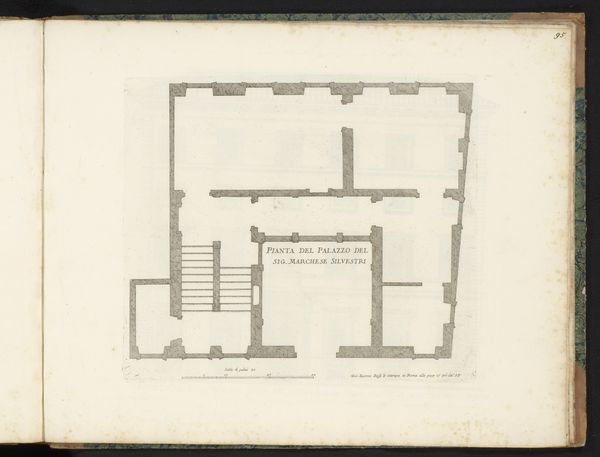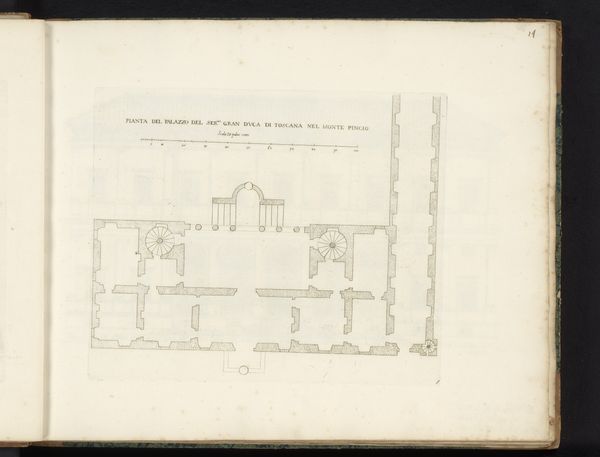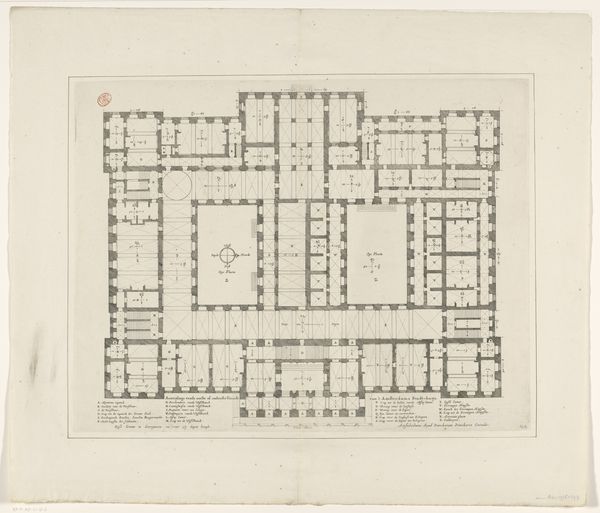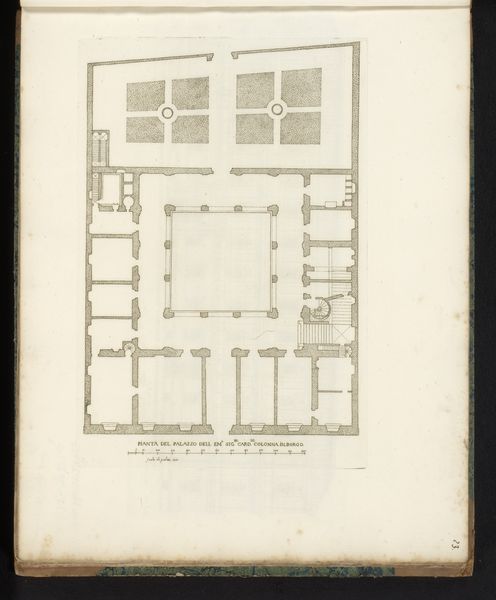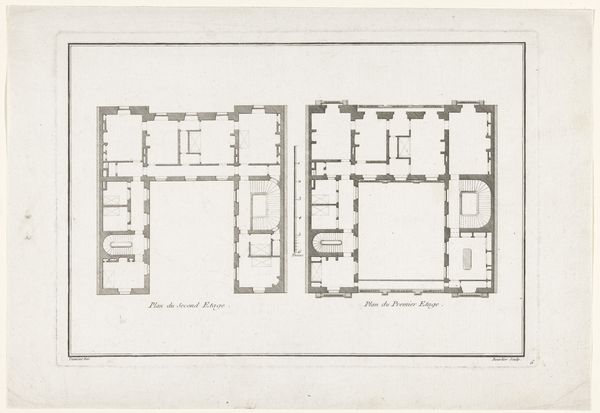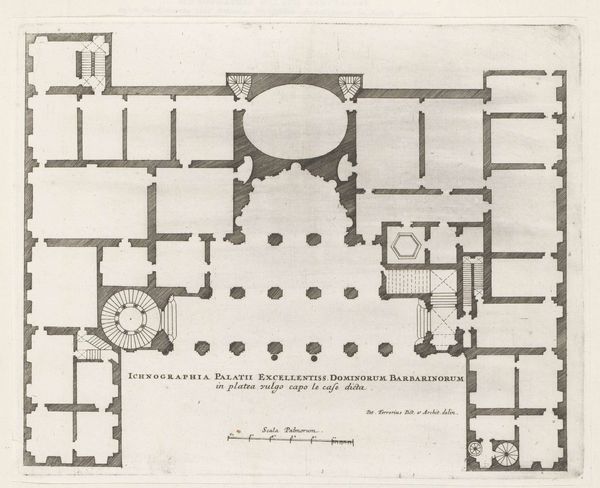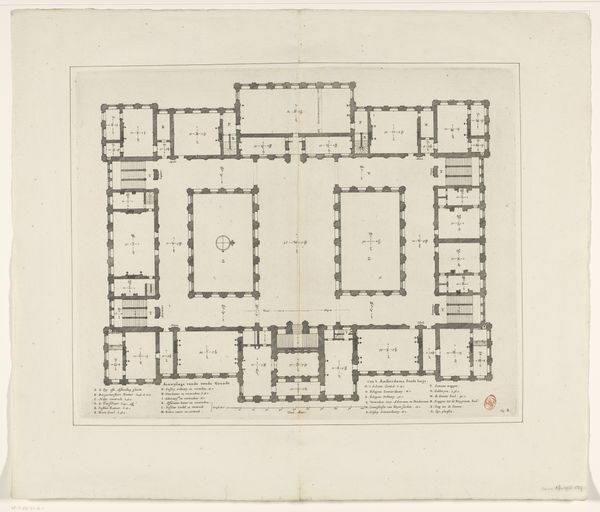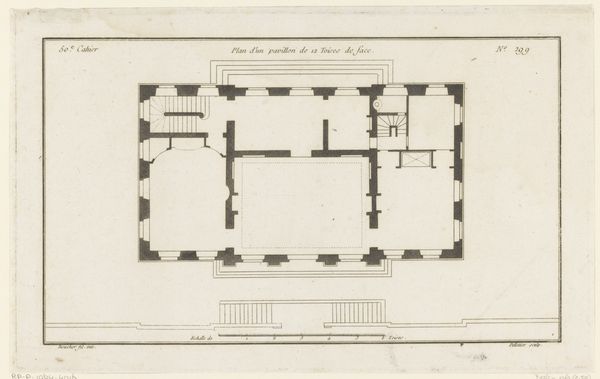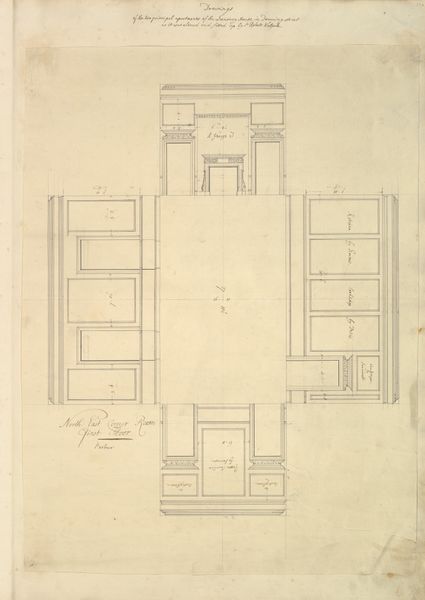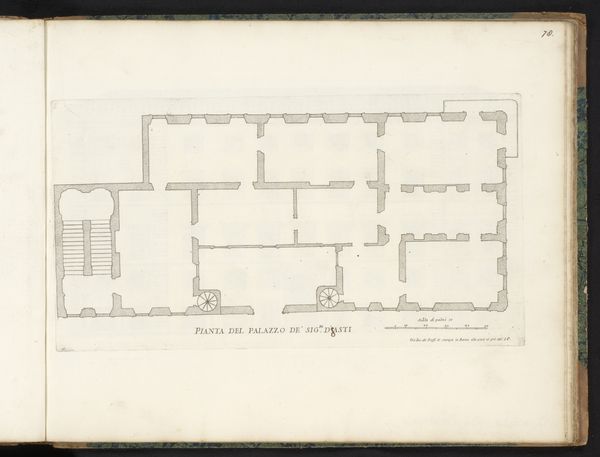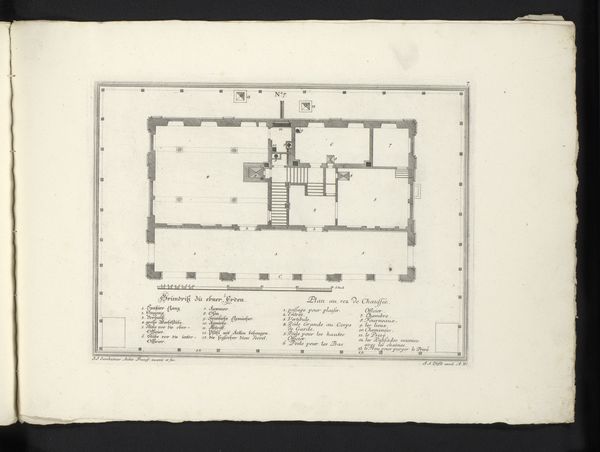
drawing, print, architecture
#
drawing
#
aged paper
#
toned paper
#
hand written
#
homemade paper
#
baroque
# print
#
sketch book
#
hand drawn type
#
personal sketchbook
#
hand-written
#
hand-drawn typeface
#
geometric
#
cityscape
#
handwritten
#
architecture
Dimensions: height 226 mm, width 285 mm
Copyright: Rijks Museum: Open Domain
Giovanni Battista Falda made this print of the ground plan of the Palazzo Barberini in the second half of the 17th century. The Palazzo itself was a prime example of the kind of extravagant building project undertaken by powerful families in Rome during the Baroque period. The Barberini family, with their papal connections, used architecture and art to project an image of power and sophistication, and a print like this offers an insight into the way the Roman elite organized their domestic lives. Notice the large rooms, the symmetrical design, and the elaborate staircases, all of which speak to a culture of display and social hierarchy. To fully understand this image, one would want to delve into archival sources to learn more about the patronage networks that sustained artists like Falda, and the social rituals that played out within the walls of the Palazzo Barberini. The meaning of art is always contingent on its social and institutional context.
Comments
No comments
Be the first to comment and join the conversation on the ultimate creative platform.
